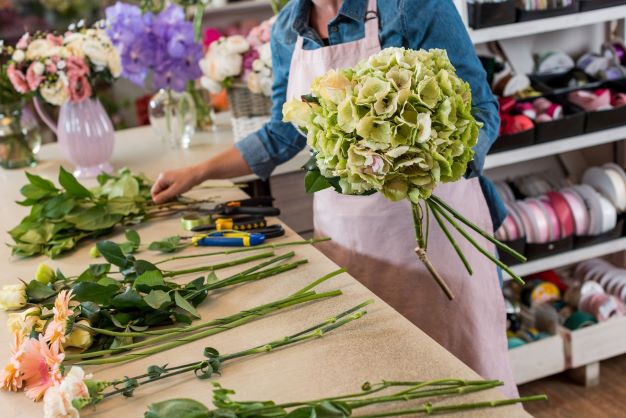Flowers are a suitable gift for any special occasion in life or just for fun. A bouquet of bright flowers can cheer up any space and leave a lasting impression. Whether you get a bouquet for an anniversary or a birthday, you will enjoy the flowers for as long as possible.The truth is that bouquets and cut flowers do not last forever. But there are tricks and little-known tips that you can use to ensure the longevity of your flowers. We reveal everything you need to know about how to make flowers last longer, and we even test a few theories.

The first step is to make the flowers last longer
Tips for caring for flowers
The first step to keeping your flowers fresh longer is to follow a few flower care principles. Use the tips below to extend the life of your flowers from the very beginning.
Stem trimming
Cut off the stems, one of the most common mistakes people make after receiving flowers is that they forgot to cut the stems. Use secateurs to cut two to three centimeters and cut obliquely. Cutting the stems at an angle allows better water intake because it does not sit flat on the bottom of the vase. After the initial cut, prune the bouquet once every few days.
How to make flowers and bouquets last longer
Trim Remove all leaves under water. Your bouquet will not only look better, but will also prevent the growth of bacteria. Some flowers, such as roses, have petals, which are the two or three farthest petals of the flower. If you remove them, the flower will open completely. After initial pruning, you should check your flowers daily for dead or loose leaves and petals to avoid bacterial rot.
Tips about flowers and bouquets
Your flowers will not last long without water, especially after their stems have been cut. After choosing a clean vase, fill it with room temperature water and add the package of flower nutrition you received with the bouquet. Make sure that the food has been mixed properly and that the water is not too dilute or too concentrated. It is also important to clean your vase thoroughly and change the water and flower food every two to three days.
Avoid direct sunlight, heat, drafts and fruit. Your flowers will last longer in a room with cold temperatures. Avoid exposing them to direct sunlight or near appliances that generate heat. You will also want to avoid areas such as open windows, vents, or ceiling vents, as they can cause the flowers to dehydrate quickly. You should also not display the bouquet near fruit. Properly, ripening fruit releases a small amount of ethylene gas, which can reduce the life of the bouquet or your flower arrangement.
We will repeat in points the basics of both cut flowers and bouquets, what not to do and what not to do in order to keep the fresh fresh.
What to do:
Always use a clean vase and good quality water.
Always use the supplied fresh flower food
Always prune the flowers first.
Always remove the leaves below the water surface.
Always check the water daily and top up.
Remove any flowers that look less than untouched over time, as this will make the remaining flowers look fresh.
What not to do:
Never use a "homemade" flower substitute, such as aspirin, soda or bleach.
Never remove all leaves from the stem
Never place flowers near fresh fruit or cigarette smoke, as both produce ethylene gas, which shortens the life of the flowers.
Never place flowers in direct sunlight, near a heat source, or near another source of excessive heat.
Never use flower food in crystal or metal containers, as the acid in the flower food will react with the metal (including lead in the crystal)
The types of flowers used in flower arrangements are how to care for them
Roses
Roses are very susceptible to bacteria in the water. Therefore, change the water daily, or use food for cut flowers with a bactericidal effect, which will support the full development and coloring of flowers. Roses must not come into contact with ethylene sources (smoke, exhaust gases, ripening fruit ...)
Gerberas
We recommend immersing the gerberas stems as deep as possible in fresh cold water for about 2 hours. The stems harden and strengthen. Then pour out the water so that the stems are immersed 3-5 cm under water.
Tulips
Tulips are very sensitive to air temperature and direct sunlight. The higher the temperature, the more they open. Be sure to cut the stems before placing them in water. Wrap the wilted tulips in paper and place them in fresh water in a cool place for a few hours. Remember that the tulip is still growing in the vase.
Chrysanthemums
Very grateful and undemanding flower. Be especially careful that the leaves do not interfere with the water. When using plant nutrition, the flowers become discolored.
Carnations
As already mentioned for chrysanthemums - it is necessary to clean the stems from the leaves and when adding nutrition to the water, you will be rewarded with coloring and opening the flowers.
Perspectives
Very demanding flower for water consumption. Be sure to insert them into the larger one
